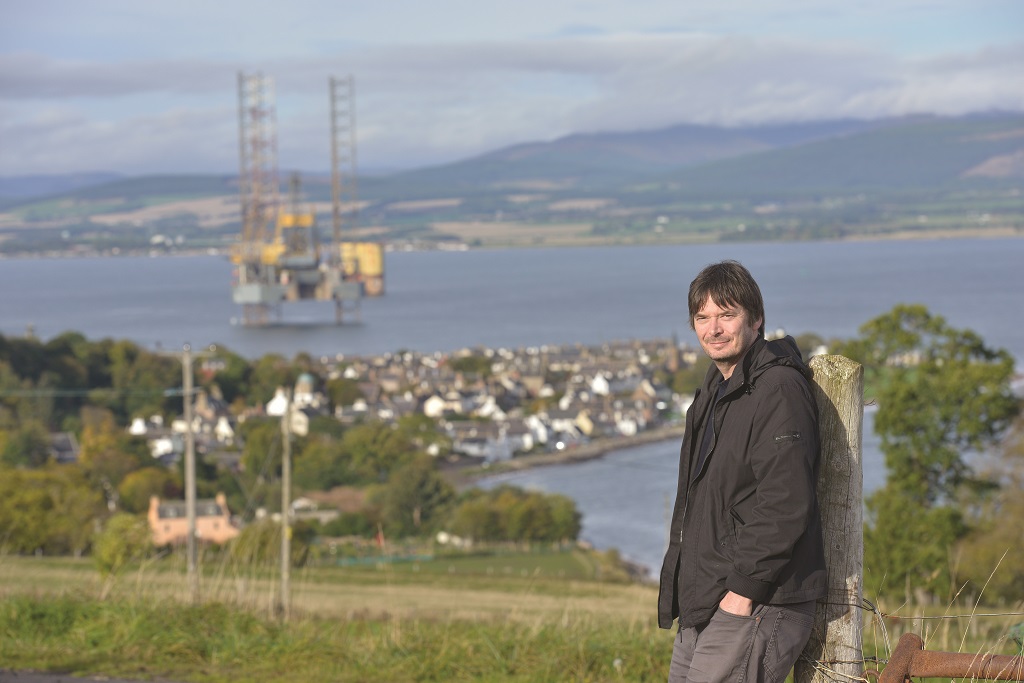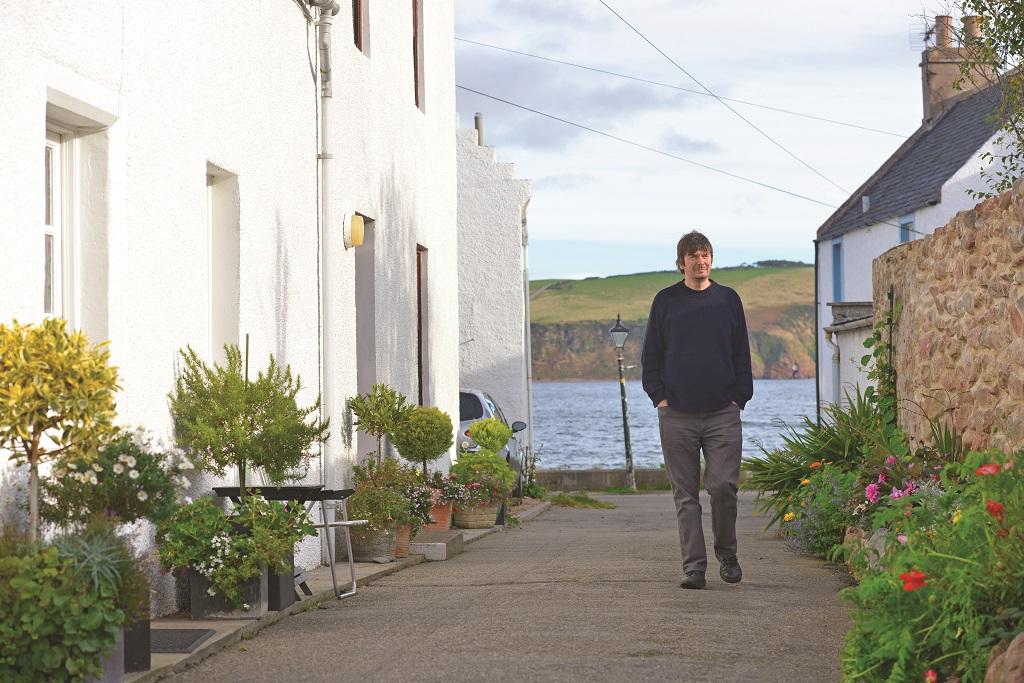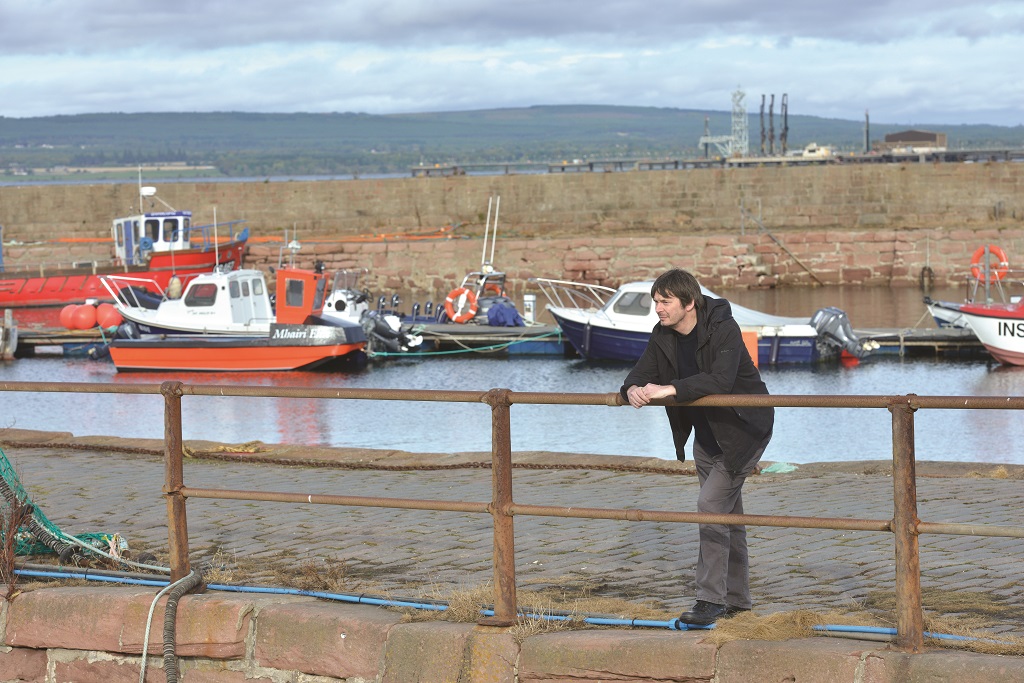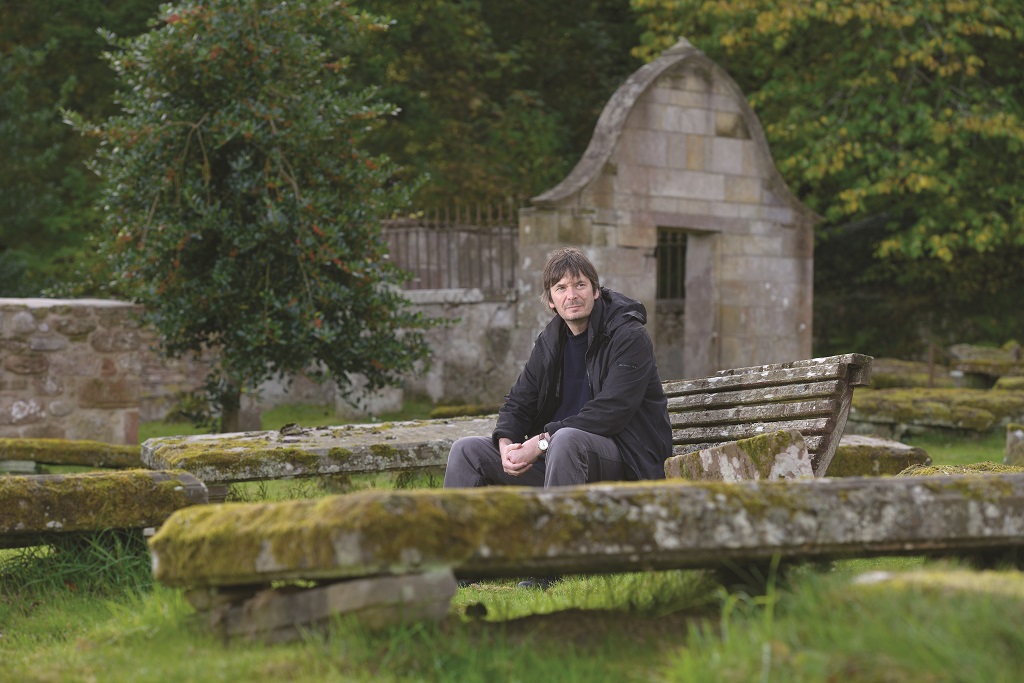The Black Isle holds a special place in the affections of celebrated author Ian Rankin.
The Black Isle conjures up images of somewhere dark and bleak. However it’s neither an island nor is it black; the name comes from the rich, dark colour of the soil. It’s a small piece of land, with agriculture and forestry in the centre, and these lovely little villages on the coastline.
The first time I visited the Black Isle was a number of years ago. One summer we rented a house in Culbokie. A couple of years later we rented a place in Rosemarkie. Both times we spent the day in Cromarty and just loved it.
I’ve always wanted to live by the sea, so when a house came up for sale right on the seafront in Cromarty, my wife said we should really try and get it. I love the constant noise of the water, the slight waves coming in – there’s never much in the way of rough seas here.
Cromarty is a pretty village. Its little streets make it a real warren; there are still parts I’m still finding out about. At times it’s not well delineated, so you’re never quite sure if you’re walking down a street or into someone’s front garden.

There used to be a thriving fishing industry here, and in the other villages along the coast of the Black Isle. There are some lovely old photographs in the old Cromarty courthouse, which is now a museum. Now there’s mainly creel fishing for lobsters and langoustines. I’ve seen a fresh lobster taken straight from the harbour to the pub. You sit there for an hour and end up with lobster and chips.
Sometimes, when I look across the bay from my window I’ll see an oil rig float past; they take them to Nigg to fix them. Ships also come in for repairs and to be refitted. In the summer you can watch the large cruise ships come in. They anchor at Invergordon. One of the tours is the Black Isle; so a few busloads will arrive in Cromarty, wander around the village and then head off again.
But Cromarty is not just a tourist attraction; it’s a living, breathing space. There are plenty of people living here, and making a living here.
It has a local shop, a post office and a secondhand bookshop that doubles as a café, where visitors can write messages on the walls and ceiling with a marker pen. I wrote something when I first came here; it’s almost faded now.
Cromarty also has a library that’s open a couple of days a week, a restaurant – Sutor Creek, which offers great local seafood and a delicious fish soup – a few B&Bs and the famous Cromarty Bakery. If I lived here all the time I’d easily put on a couple of stone eating their pies, sausage rolls and shortbread. And with two places you can get a pint – the Cromarty Arms Inn and the Royal Hotel – I can survive very nicely up here.
The village even has its own brewery, The Cromarty Brewing Company, which has been a huge success. When I first came here I used to drink beer from the Black Isle Brewery. It’s terrific, but when you’re here you have to drink Cromarty beer. Whenever there’s a new venture, the local community is always very supportive.

For example, The Cheese House was set up by a Dutch guy, and initially it sold only Dutch cheeses. The range has been broadened so that now there’s a lot of Scottish cheese and it’s been shortlisted for some food awards. If it’s open I can’t walk past without buying some cheese and oatcakes.
It’s not just its prettiness that attracts visitors to Cromarty; it also has some excellent attractions.
The former house of the village’s most famous son, the renowned geologist Hugh Miller, is a five-star museum. There’s also a big monument to him up the hill.
The old courthouse and jail is also a museum. You can walk around the old cells, they put on small exhibitions. The old court room is exactly as it was, and they’ve put in a few waxworks to add to the atmosphere.
The old church in Cromarty, which is no longer a working church, has a very atmospheric cemetery. In fact, there are a number of burial grounds in and around the village, including the pirate’s burial ground. I don’t think there are any pirates there but there are lots of skulls and crossbones on the gravestones – it’s an amazing spot. There’s a war cemetery at the top of the hill, containing servicemen from both the First and Second World Wars.
Whenever we come up, there’s always something on, whether it’s a lecture, live music, or even a festival. Recently a group of kids and teenagers put on an opera, which was really well received.
There’s an annual film festival in December. Films are shown in the old brewery, which is now an arts centre, and in another big arts complex just outside the village. Some short films were also screened outside on the lighthouse wall; people stood outside with a brazier and a whisky.

This year we had a crime fiction festival – we had four authors up for the weekend. We also had a murder mystery dinner in the hotel, hosted by the local amateur dramatics society.
Not one of the authors – including myself – worked out who the killer was. We also held talks and readings in the old courthouse – the speaker standing in the dock.
It’s difficult to say what time of the year I prefer to be in Cromarty. In July it’s lovely; the days are long and you can sit outside for most of the day and night. And it’s great if you have kids. If you take them to the beach you can sit with a pint whilst they splash in the water.
Conversely, when I was here a couple of Decembers ago it was squally, there was sleet, and the wind was howling. I loved it. I’d go for a walk down by the harbour and I could barely stand still, I was getting pushed along by the wind.
Whilst I haven’t spent as much time in Cromarty this year, I did manage to finish the final draft of my new book, Saints of the Shadow Bible, here. It’s the first piece of writing I’ve done up here. The previous book to that, Standing in Another Man’s Grave, was partly set up in Inverness and the Black Isle, so obviously the place has had some influence on the writing – though I’m not sure how much people in the Black Isle liked the fact that I brought death and destruction to the place.

My routine for writing here was pretty straightforward: have breakfast, read the paper, start writing; stop for lunch – a Cromarty Bakery sausage roll, cup of tea, write a bit more; go for a walk, blow the cobwebs away; go to the pub in the evening, have a couple of pints, catch up with all the local gossip and then an early night. I find that I sleep really well here – it’s a combination of the sea air, peace and quiet and that I’ve had some exercise.
The whole of the Black Isle is well worth a visit. If you have a young family there’s a nice petting zoo near Munlochy. If you like strange, supernatural things then there’s the Clootie Well, also near Munlochy – a bit of woodland where the locals hang up bits of cloth for good luck. The last time I was there someone had put up a double duvet cover – it was hung between two trees and said something like ‘big problem – big rag’.
Walking is what I most enjoy when I’m here. There are plenty of great walks in and around Cromarty, such as the lovely walk through the woods to the top of the South Sutor, which has a stunning view. There’s a lovely woodland walk at the Clootie Well and there are a couple of nice walks in Rosemarkie: along the beach and Fairy Glen, a lovely little woodland walk that ends with a waterfall.
The Black Isle is a haven for wildlife. You can see dolphins at Chanonry Point, or you can go out and have a boat trip. The RSPB have a lovely little hide on the coast at Unish – my wife and I went there in July and saw an osprey just three minutes after we arrived. We recently saw godwits.
Since buying a place in the Black Isle I’ve got to know the A9 very well. And when I reach Aviemore, and I’m in hailing distance of Inverness, that’s when I know that I’m getting close.
But it’s not until I’ve crossed the Kessock Bridge and taken that right turn across the A9 that I really begin to relax, as I drive through beautiful coastal villages on the way to Cromarty and my wonderful house by the sea.
- This feature was originally published in 2014.
TAGS

